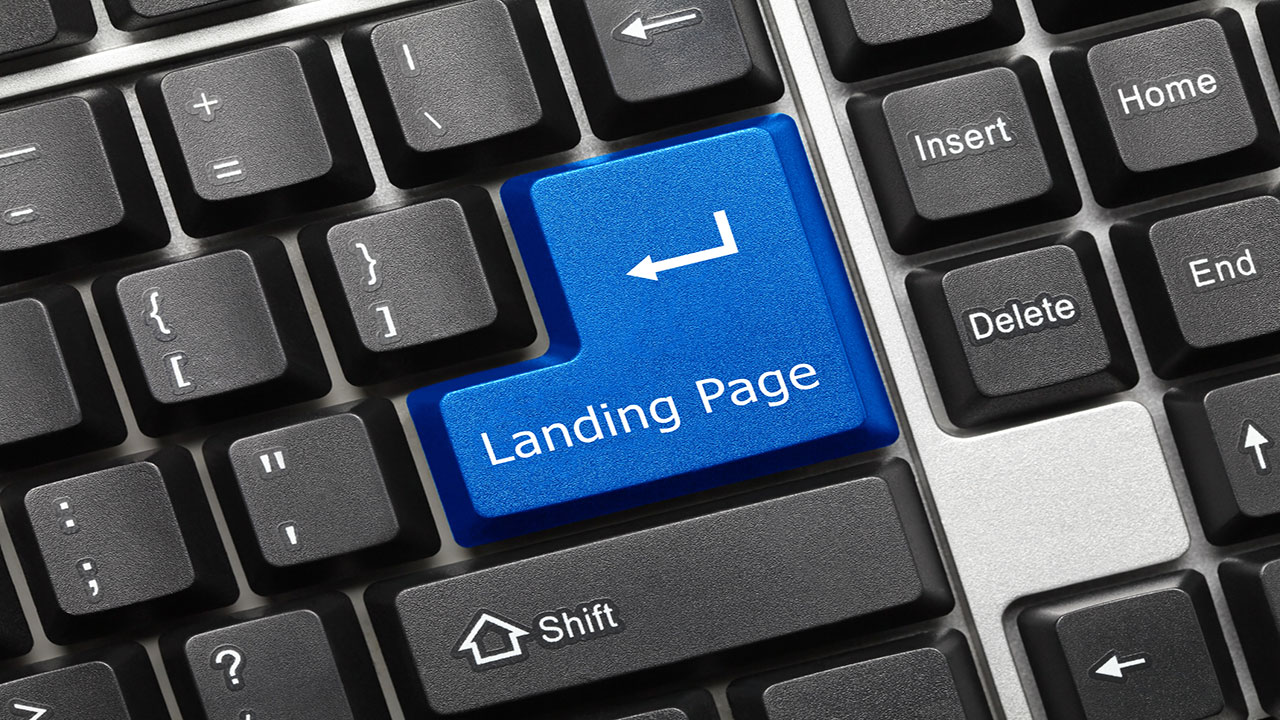8 Crucial Things Your Real Estate Landing Page Should Have

A real estate landing page can be a powerful tool to help you generate more leads for your business, but how it’s designed makes all the difference. Landing pages are basically any web page that visitors arrive at from another source, such as an advertisement.
These online marketing tools are used with the specific goal of encourages visitors to take action. Maybe you want to grow your existing mailing list, promote your new listings, or generate leads. Whatever the goal of your landing page happens to be, each component on this page needs to be effective at helping you achieve your objectives.
Here are some of the more important traits that your real estate landing page should include.
1. Catchy Headline

The first thing that people will see on your landing page is your headline. Given the weight of importance of your headline, you’ve got to make sure it easily grabs people’s attention. It should be punchy, to the point, and not overly lengthy. Your headline plays a crucial role in converting website visitors into actual leads.
Not only is the actual content itself important, but so is its design. Use large, easy-to-read fonts in a color that contrasts the background.
Make sure that the headline is relevant to the previous advertisement that enticed visitors to visit your landing page. If your headline is not inline with your ad, visitors will most likely hit the back button.
2. Video
Right after your catchy headline should be a captivating image or video that stimulates interest in the visitor. Video, in particular, is highly engaging, even more than images.
The content of your video can vary, but it should be associated with your offer in some way, For instance, if you’re offering a free report, you may want to have a quick video that sums up all the important points that are contained within the report.
Having a video showcasing your offer will add some credibility and authenticity to it and foster even more interest from visitors. Use that opportunity to help you achieve the main goal of your landing page.
3. Call to Action (CTA)

What do you want your landing page’s visitors to do after they’ve seen what you have to offer? Opt-in to your newsletter? Click through to your website? Whatever you want them to do, it’s important that you offer clear instructions on your landing page.
A call-to-action (CTA) basically tells people what to do and evokes a specific action from your visitors. It should be clear and simple, leaving no room for confusion.
Determine what the goal of your landing page is, whether it’s to capture leads, boost traffic to your website, or some other objective. Your CTA should reflect that goal.
If, for instance, you want to capture leads, your CTA should include a short opt-in form that allows visitors to input their contact information. On the other hand, if you simply want to send visitors to a page on your website, a simple command such as “Click Now!” in a bold, bright, highly visible button will suffice.
Your CTA should be placed on a part of your landing page that is easily noticeable. It shouldn’t be hidden or hard to find. In fact, you may want to include it on your landing page multiple times so that visitors don’t have to scroll up or down to find it. This will help increase conversions.
4. Unique Selling Proposition (USP)
What is unique about your proposition? What selling point are you trying to convey to your visitors? Your unique selling proposition (USP) is what differentiates you or your offer from your competitors.
It could be that you’ve created a unique list of foreclosures and short sales in a specific geographical area that investors might be interested in. Or it could simply be that you’ve managed to sell hundreds of properties over the asking price. Or perhaps you’re offering sellers free professional home staging services. Either way, it should be something that sets you apart from your competitors.
Whatever your USP happens to be, you need to highlight it on your landing page. Mention it a few times in different ways on the page to drive your point home.
5. Benefits of Your Offer

What’s in it for the visitor? Why should they click through or opt into your form? To give them some incentive to take the bait, you need to clearly express the benefits for your visitors if they take action.
People want to know what your offer will do for them. They want to know how your services or your offer will benefit them, so give them this information in an easy-to-read, clear format. Ideally, the benefits should be listed in a bullet format.
Bullet lists are easy to digest and skim through. Visitors don’t want to have to sit there reading through a long, drawn-out paragraph explaining all the details of your offer. Instead, they want something that they can easily digest in a very little amount of time, and a bullet list is the perfect way to do that.
6. Sense of Urgency
You should leave visitors feeling as if they need to take action right away or they could potentially lose out on your amazing offer. To do that, you need to create a sense of urgency.
This can be done by putting an expiry date on your offer. Clearly specify a deadline, which will urge visitors to take advantage of what you’re offering before that specific date nears.
7. Testimonials and Accolades

People typically like to do business with businesses they trust, and one way to establish a trust factor is by listing your accolades and testimonials.
Tell your visitors what you’ve accomplished in your past throughout your career. Whether you’ve been featured in magazines or newspapers, received awards in your field, or are a member of an exclusive club for high achievers, such accolades can go a long way at impressing people and helping them trust your level of professionalism and expertise.
By the same token, including a list of testimonials from real clients that you’ve assisted in the past can really help visitors trust you. People commonly look to the internet for reviews on services before they choose a particular professional. If you can muster up a bunch of testimonials from previous clients who can vouch for you, you’ll be able to appear more trustworthy and capable without even having to toot your own horn.
8. Contact Information
Of course, you’ll want to include your contact information to make it easy for visitors to get in touch with you. While many may choose to simply engage through your CTA, some visitors may want to actually contact you directly.
The Bottom Line
Your real estate landing page is a powerful tool that can help you generate leads and boost engagement with your brand. It should be designed in such a way so as to help you achieve your specific goal, but you’ll have to establish that objective before the design process begins. Just be sure to include these crucial features on your landing page to help it work the way it’s intended to.


